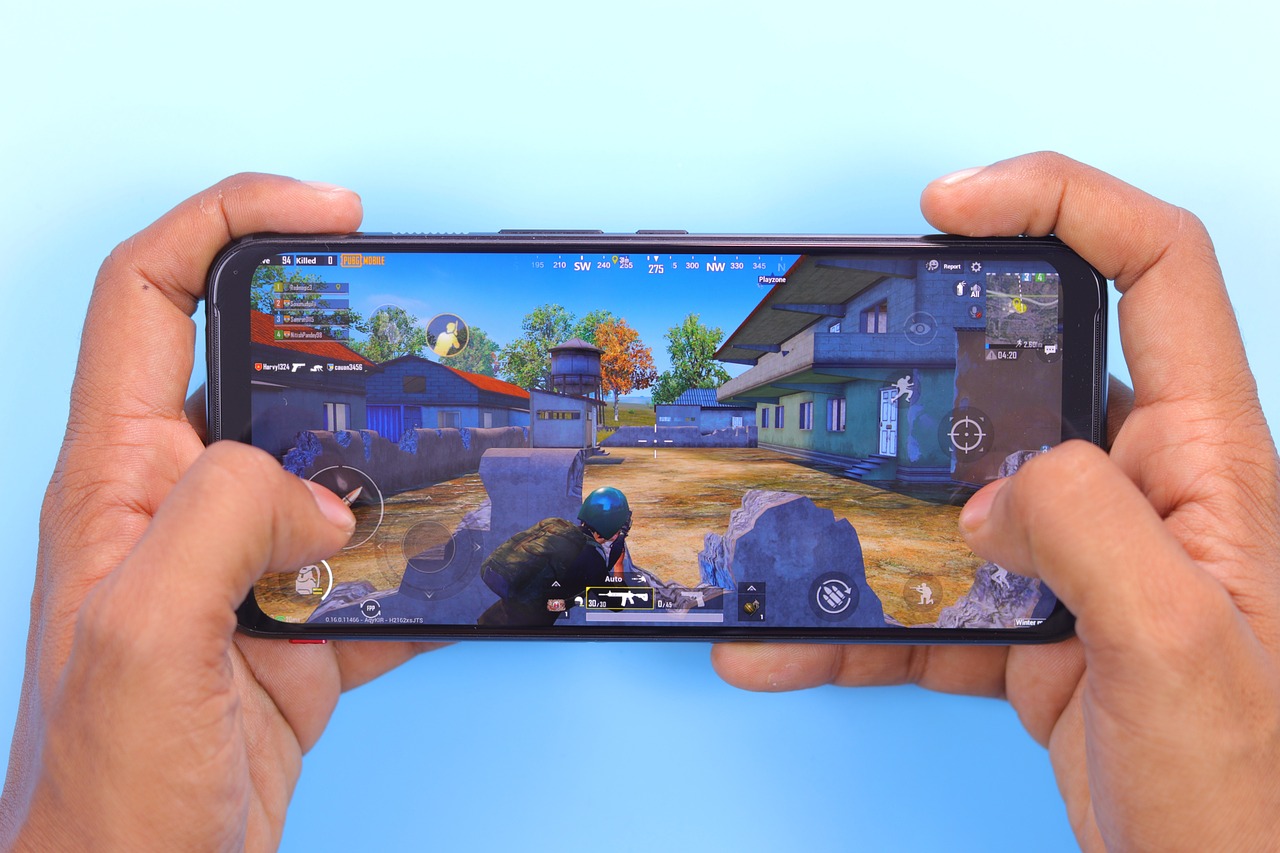
The Evolution of Mobile Gaming: From Snake to AAA Titles
Iren
- 0
- 559
The Beginnings: Early Mobile Games
The journey of mobile gaming began with humble origins, transforming from simple pixelated diversions to immersive, graphically rich experiences that rival console and PC games. This evolution reflects not only technological advancements but also changing consumer preferences and industry dynamics.
The Birth of Mobile Gaming: Snake and Tetris
The late 1990s marked the inception of mobile gaming with Nokia’s introduction of “Snake” on its 6110 model in 1997. This simple yet addictive game became a cultural phenomenon, paving the way for mobile gaming’s future. Following closely, Tetris made its mobile debut, further cementing the potential of handheld gaming devices.
Key milestones in early mobile gaming:
- 1997: Nokia introduces “Snake” on the 6110 model
- 1999: The first WAP (Wireless Application Protocol) phones enable rudimentary mobile internet gaming
- 2001: The release of the first mobile phones with color screens enhances gaming visuals
- 2002: The introduction of Java-based games expands mobile gaming possibilities
- 2003: Nokia launches the N-Gage, a dedicated mobile gaming device, blending phone and handheld console functionalities
These early games, while simplistic by today’s standards, were revolutionary in their ability to provide entertainment on-the-go, utilizing the limited hardware capabilities of early mobile phones.
The Limitations of Early Mobile Games
The first generation of mobile games faced significant technical and design constraints:
- Hardware Restrictions: Early mobile phones had limited processing power, memory, and battery life, restricting game complexity and duration.
- Display Limitations: Monochrome screens with low resolution made detailed graphics impossible, leading to simplistic, often text-based games.
- Input Constraints: The reliance on physical keypads limited control schemes, often resulting in clunky gameplay mechanics.
- Storage Constraints: Limited phone memory meant games had to be small in size, limiting their scope and features.
- Connectivity Issues: Early mobile networks were slow and unreliable, making multiplayer or internet-dependent games challenging to implement.
Despite these limitations, developers showed remarkable creativity, crafting engaging experiences within these constraints. Games like “Snake” and “Tetris” thrived due to their simple yet addictive gameplay loops, which perfectly suited the mobile format.
The Rise of Smartphones: A New Era for Mobile Gaming
The introduction of smartphones, particularly the iPhone in 2007 and the first Android devices in 2008, revolutionized mobile gaming. These devices offered larger, touch-sensitive screens, more powerful processors, and significantly improved graphics capabilities.
The Introduction of the App Store and Google Play
The launch of Apple’s App Store in 2008 and Google’s Android Market (later rebranded as Google Play) in the same year marked a turning point for mobile gaming. These platforms provided a centralized marketplace for developers to distribute their games and for consumers to easily discover and download new titles.
| Aspect | Pre-App Stores | Post-App Stores |
|---|---|---|
| Game Distribution | Carrier-controlled, limited | Open market, vast selection |
| Developer Access | Restricted to major studios | Accessible to indie developers |
| Game Variety | Limited, mostly pre-installed | Enormous variety, constant new releases |
| Monetization | Primarily pay-to-download | Freemium, in-app purchases, ads |
| User Base | Limited to tech enthusiasts | Mainstream, billions of users |
| Update Frequency | Rare or non-existent | Regular updates and patches |
This democratization of game distribution led to an explosion in the number and variety of mobile games available. Indie developers could now reach a global audience, leading to innovative new game concepts and genres.
The Shift from Casual to Complex Games
As smartphone technology advanced, so did the complexity and depth of mobile games. This shift was driven by several factors:
- Improved Hardware: More powerful processors and GPUs allowed for more sophisticated graphics and gameplay mechanics.
- Larger Screens: Increased screen sizes and resolutions enabled more detailed and immersive gaming experiences.
- Enhanced Touch Controls: Multi-touch capabilities and improved responsiveness allowed for more nuanced control schemes.
- Expanded Storage: Greater on-device storage and cloud saving options enabled larger, more content-rich games.
- Better Connectivity: The rollout of 3G and 4G networks facilitated online multiplayer gaming and live service games.
This technological progression allowed developers to create more ambitious titles, bridging the gap between mobile and traditional gaming platforms. Games like “Angry Birds” (2009) and “Candy Crush Saga” (2012) demonstrated the potential for mobile games to become global phenomena, attracting millions of players and generating substantial revenue.
The Emergence of AAA Mobile Titles

The continuous advancement of mobile technology has blurred the lines between mobile and console/PC gaming, giving rise to AAA mobile titles that offer console-quality experiences on handheld devices.
Defining AAA Games on Mobile Platforms
AAA mobile games are characterized by:
- High Production Values: Large budgets for development, marketing, and ongoing support.
- Advanced Graphics: Utilizing the latest mobile GPUs to deliver near-console quality visuals.
- Complex Gameplay: Offering depth and mechanics comparable to traditional gaming platforms.
- Extensive Content: Providing hours of gameplay, regular updates, and often live service elements.
- Cross-Platform Features: Many AAA mobile titles offer cross-play or cross-progression with console/PC versions.
Notable AAA Mobile Titles
Some standout AAA mobile games that have redefined the mobile gaming landscape include:
- PUBG Mobile (2018)
- Battle Royale genre pioneer on mobile
- High-quality graphics and large-scale multiplayer
- Regular updates and esports presence
- Call of Duty: Mobile (2019)
- Faithful adaptation of the popular console/PC franchise
- Combines multiple game modes including Battle Royale
- High-fidelity graphics and smooth performance
- Genshin Impact (2020)
- Open-world action RPG with gacha elements
- Cross-platform play between mobile, PC, and consoles
- Regular content updates and expansive storyline
- League of Legends: Wild Rift (2020)
- Mobile adaptation of the world’s most popular MOBA
- Redesigned for touch controls while maintaining core gameplay
- Competitive scene with official tournaments
- Diablo Immortal (2022)
- Mobile entry in the iconic action RPG series
- MMO elements with shared world and multiplayer dungeons
- Complex character progression and loot systems
These titles demonstrate how mobile games can now offer experiences that rival their console and PC counterparts, both in terms of gameplay depth and visual fidelity.
Monetization Strategies in Mobile Gaming
The evolution of mobile gaming has been accompanied by significant changes in monetization strategies, reflecting both technological advancements and shifting consumer behaviors.
The Evolution of Monetization Models
| Model | Description | Pros | Cons |
|---|---|---|---|
| Pay-per-Download | One-time purchase to download and play the game | Clear value proposition, no ads | Limited revenue potential, high barrier to entry |
| Freemium | Free to download, with optional in-app purchases | Low barrier to entry, potential for high revenue | Can lead to “pay-to-win” scenarios, potential for player exploitation |
| Subscription | Regular payment for access to a game or collection of games | Steady revenue stream, encourages long-term engagement | May deter casual players, requires constant content updates |
| Ad-Supported | Free games that generate revenue through in-game advertising | Accessible to all players, can be combined with other models | May disrupt gameplay experience, potential for lower user retention |
| Hybrid | Combination of multiple monetization strategies | Flexibility to cater to different player preferences | Can be complex to balance and implement effectively |
The industry has largely shifted towards freemium and hybrid models, which allow for a larger player base and potentially higher revenue through microtransactions.
The Impact of Microtransactions and Gacha Mechanics
Microtransactions and gacha mechanics have become integral to many mobile games’ monetization strategies, particularly in free-to-play titles. These systems allow players to purchase virtual goods, currency, or chances to obtain rare items.
Key impacts of these systems include:
- Revenue Generation: Microtransactions can generate substantial ongoing revenue, especially from high-spending players (often referred to as “whales”).
- Game Design Influence: Games are often designed around encouraging microtransactions, potentially affecting gameplay balance and progression systems.
- Player Engagement: Gacha mechanics can increase player engagement through the excitement of random rewards, but may also lead to addictive behaviors.
- Ethical Concerns: The randomized nature of gacha systems has drawn comparisons to gambling, leading to regulatory scrutiny in some regions.
- Player Segmentation: These systems can create divides between paying and non-paying players, potentially affecting game communities and competitive balance.
While controversial, microtransactions and gacha mechanics have become a cornerstone of mobile game monetization, allowing developers to offer high-quality games for free while generating revenue from optional purchases.
The Future of Mobile Gaming

As technology continues to advance, the mobile gaming landscape is poised for further evolution, promising even more immersive and innovative experiences.
Technological Advancements Shaping the Future
Several emerging technologies are set to transform mobile gaming:
- 5G Networks: Ultra-fast, low-latency connections will enable more complex multiplayer experiences and could facilitate game streaming services on mobile devices.
- Cloud Gaming: Services like Google Stadia, Microsoft xCloud, and Amazon Luna are bringing console-quality games to mobile devices through streaming technology.
- Augmented Reality (AR): Building on the success of games like Pokémon GO, AR technology will create more immersive, real-world integrated gaming experiences.
- Virtual Reality (VR): As VR technology becomes more compact and affordable, we may see the rise of mobile VR gaming experiences.
- Artificial Intelligence: AI advancements will lead to more dynamic and personalized gaming experiences, with smarter NPCs and adaptive difficulty.
- Blockchain and NFTs: These technologies could revolutionize in-game economies and digital ownership of virtual assets.
Predictions for the Next Decade
Looking ahead, several trends are likely to shape the future of mobile gaming:
- Cross-Platform Integration: The lines between mobile, console, and PC gaming will continue to blur, with more games offering seamless cross-platform play and progression.
- Subscription Services: We may see a shift towards Netflix-style subscription models for mobile games, offering access to premium titles for a monthly fee.
- Esports Growth: Mobile esports will likely continue to grow, particularly in regions where smartphones are the primary gaming devices.
- Increased Regulation: As the mobile gaming industry grows, we may see more regulatory oversight, particularly regarding monetization practices and data privacy.
- Hyper-Casual Renaissance: While AAA titles will continue to grow, there may be a resurgence in simple, pick-up-and-play games designed for short gaming sessions.
- Social Integration: Mobile games will likely become more socially integrated, with enhanced multiplayer features and social media connectivity.
- Adaptive Gaming: Games that adapt to players’ locations, movements, and even biometric data could create uniquely personalized experiences.
As mobile devices continue to increase in power and capabilities, the distinction between mobile and traditional gaming platforms may eventually disappear entirely, creating a unified gaming ecosystem accessible from any device.
The journey of mobile gaming from simple games like “Snake” to complex AAA titles represents one of the most rapid and significant evolutions in the history of interactive entertainment. As technology continues to advance and consumer preferences evolve, mobile gaming is poised to remain at the forefront of innovation in the gaming industry, continually reshaping how we play and interact with games in our daily lives.



